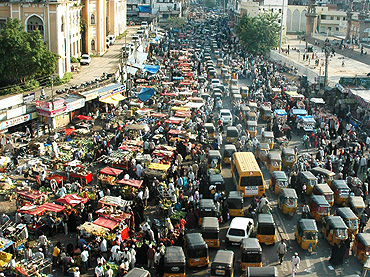India’s traffic and deadly roads was officially declared the worst in the world in 2007.

Due to India’s motorized mayhem, it has earned itself an unenviable title as the most dangerous place to drive in the world. In fact, the number of road accidents in the country has claimed over 130,000 lives in 2007 alone.


Because of that, the local government has come up with a review into traffic safety, which has been known by local drivers as “good horns, good brakes, good luck”. Aside from that, ministers are thinking of putting up new measures like making anti-braking systems and air bags a must in all cars.
[dfp1]

Nevertheless, experts say that the new laws will have minimal effect in India for reasons that seat belts are rarely worn and that there is no certainty concerning the road behavior of an average driver. Also, due to the different modes of transportation used, which include cows, camels, cycle-rickshaws, elephants, and SUVs, road users don’t have any idea what sort of vehicle they will encounter.


According to Rohit Baluja of Delhi’s Institute of Road Traffic Education, “The real issue is not car design but road design. About 85% of all deaths on the roads are pedestrians and cyclists, not drivers. We do not design traffic management systems to separate different streams on traffic. In America this began in 1932”.

[dfp2]
He also stated that the lack of knowledge about road basics has caused locals to agree to buying licenses through bribes. In order to prevent this situation from getting worse, Rohit called for proper regulation of driver training and licensing.

India now accounts for 10% of the millions of fatal accidents each year, which, according to the Indian government has cost 2 to 3% of their GDP every year.
How to Drive Safe in India
For you to survive the roads of India, here are some rules to follow:
1. Do not stop at pedestrian lanes just because someone wants to cross the road. You may only do so if you want your vehicle to be bumped in the back. Pedestrians have been strictly informed to only cross the street when the traffic is moving slow or has come to a dead stop because the minister is in town.


[dfp3]
2. Like in any other countries, blowing the horn is not considered a sign of protest. In India, they horn to express frustration, resentment, joy, and romance. Sometimes, they do this to awaken a sleeping cow in the middle of the market.

3. For those with the mindset of Genghis Khan, night driving on Indian roads can be an exciting experience. In some ways, it can be compared to playing Russian roulette because you do not have any idea, who amongst the drivers is loaded.

4. What you think like premature dawn on the horizon may turn out to be a truck running at a very fast speed. Whenever you are in this kind of situation, you can simply pull partly into the field and let the truck pass. Remember, truck drivers are the “James Bonds of India”, which means they are licensed to kill.

If after all this, you still want to drive in India, go out between 8PM and 11AM. At this time, the police have already gone home and the locals are then free to enjoy the “FREEDOM OF SPEED” as stated in the constitution.

[dfp4]


